User Experience and Product Management Professional working in the Washington DC area. Leading UX/Product teams to improve experiences across multiple digital channels.
“Design is a funny word. Some people think design means how it looks. But of course, if you dig deeper, it’s really how it works.” — Steve Jobs
The Credit Union National Association (CUNA) merged with the National Association of Federal Credit Unions in January 2024 to become America’s Credit Unions. As the existing Director of UX and Product Development, I was tasked with merging the two existing websites into the new America’s Credit Union website.
Merging the two websites was not an easy task, as its revenue is generated from various business practices, including advocacy and fundraising, conference and training sales, Product sales, and membership opportunities. The challenge was to integrate these business lines into one seamless experience for the new organization's membership.
The team I led consisted of a UX researcher, a UX Designer, one frontend developer, and two visual design consultants. Due to the small size of the team, I also contributed to the team in UX research and interaction design.
With an ambitious schedule of delivering a new website in 7 months, it was my responsibility to lead the UX team through a rapid design process. I created a UX framework at CUNA that we adopted for this project. We reviewed all research done to date by both organizations. 90 percent of US credit unions are members of America’s Credit Unions.
At CUNA, we had a pool of over 200 volunteer members throughout the US in various credit union roles to assist us with user studies. This allowed us to ramp up quickly and start conducting studies including card sorting, user interviews, user testing, and surveys.
After evaluating Adobe Analytics and conducting a card sorting user study in Optimal Workshop, I proceeded to create a sitemap for the new America’s Credit Unions navigation. My team and I conducted user tests on areas of high importance to the site to vet the design direction with our core end-users. We conducted short surveys at the end of each user test to gain more insights.
I worked with the visual design consultants and marketing to develop the brand identity and voice for the website. Working within an agile environment, we were able to provide high-fidelity mockups for the engineering team and collaborate with business analysts to establish the necessary requirements in Jira. We also established a Figma design system to assist in future design updates.
We launched on time, and the UX work was on budget in October 2024.
Software Used:
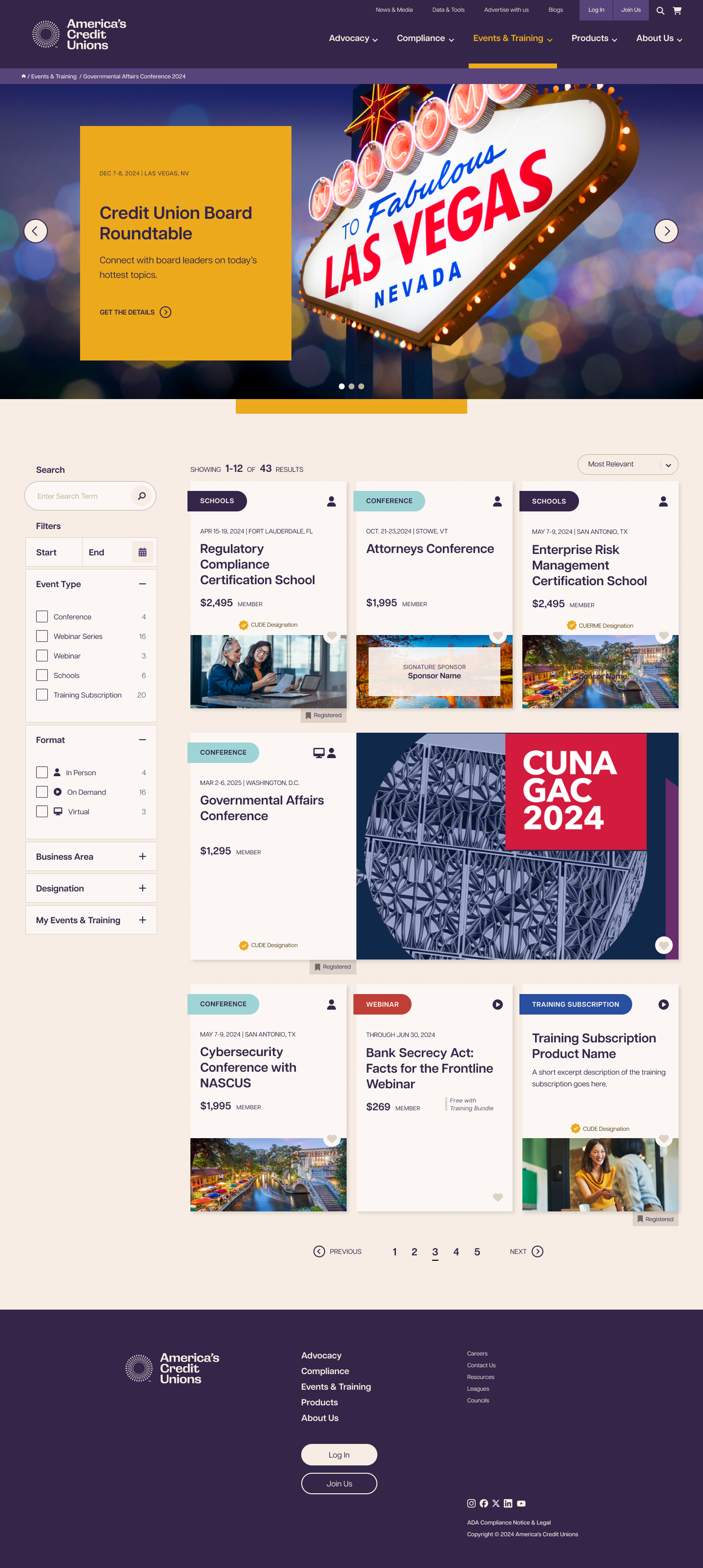
This Health and Human Services (HHS) application serves as the public-facing portal for Medicare appeals. I was hired by the Office of Medicare Hearings and Appeals (OMHA) to lead the user interface and user experience (UI/UX) efforts for the redesign of the portal. The portal's user interface was outdated, and the system's response time was extremely slow.
The timeline for this project was aggressive, and I was unable to gather feedback from end users. The redesign of the portal was based on heuristic analysis and guidance from the U. S. Web Design System.
The key issues that needed enhancements were the following:
Software Used:
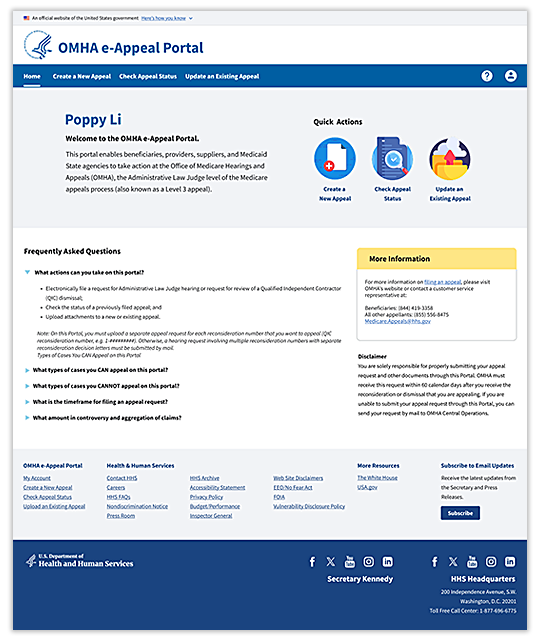
I was hired to improve the end-user experience for PenFed Credit Union's digital banking applications. PenFed is the second-largest federal credit union in the U.S. with over 2.9 million members.
In this role, I led a UX team consisting of 4 UX designers and 1 UX researcher. The team was responsible for updating and maintaining the user experience for Penfeds' online and mobile banking apps for its members.
This was a talented team, but they worked in silos on different aspects of the online or mobile experiences. The siloed work caused inconsistencies in the designs created. The UX researcher also lacks the proper access to members for direct feedback from the membership. The Figma design system was not kept up to date and was fragmented, contributing to design inconsistencies.
I needed to establish a UX plan for Digital Banking and implement strategies to enhance the UX process, allowing the team to make more informed design decisions. I needed to establish cohesion by updating the Figma design system and establishing design templates to facilitate the design work required. Having this system would also supply engineering with the information and references they needed for development work.
The plan also included strategies to solicit feedback from members and provide them with the necessary tools to conduct UX research.
My work laid the groundwork for the improvements made in 2025.
Software Used:

BriightTM is a diabetes coaching app available on Android and iOS mobile platforms developed by Becton Dickinson (BD). I led the user experience team that launched the MVP version of this application, which was released in the app stores in October 2017. The Diabetic community in the US is vast, and our research revealed who among this large population we would target. We landed on targeting newly diagnosed type 2 diabetics who needed coaching to manage their disease.
BriightTM features an informative chatbot, data visualization of the user's health progress based on daily logging, diabetes articles, and recipes. I was named in the patent for the unique and innovative daily logging functionality for diabetic patients regarding their exercise, carbs, and blood glucose levels.
I conducted many design workshops that led to many iterations of logging food, exercise and mood. These factors played a key role in managing diabetes. Our research revealed that users felt many of our competitors’ apps had a tedious and complicated approach to daily logging. We worked hard to come up with a simple easy way to do daily logging that would be enjoyable to users.

 Sketch
Sketch InVision
InVision Photoshop
Photoshop Illustrator
Illustrator Flinto
Flinto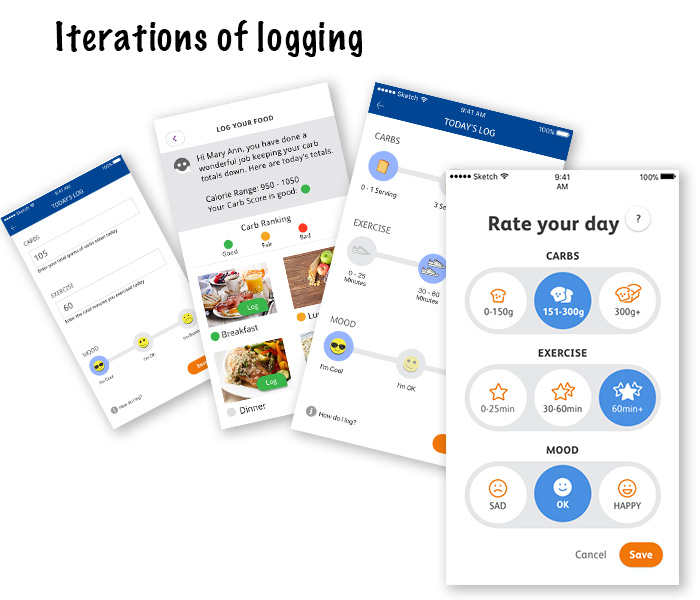
mPOS is a mobile point of sale app used in the United States Postal Service (USPS) retail stores nation-wide.
mPOS is the mobile version of the point of sale system used at the USPS counters. The application was built on the iOS platform and has the capability of doing 80% of the transactions that the counter system can accomplish.
Where MPOS has been implemented the device has reduced line waits by 20%.
My role on this project was as lead designer.
Software Used: Axure RP
Axure RP Photoshop
Photoshop Illustrator
Illustrator
Compass is a mobile app in development by the US Census Bureau to be used in the coming 2020 Census. The case management app will be used by field representatives to conduct individual survey canvasing to verify households in the U.S. and Puerto Rico.
The app was first developed by a development team without any user experience resources. This version of the app went through testing by a usability lab which demonstrated that the app was difficult to use.
I was assigned to the team to evaluate the app and recommend improvements to the experience. I began with a heuristic evaluation providing a report of best practice design patterns that could be applied to the application. Next, I flew out to Arizona to conduct field evaluations and observations of the app in use. After the field study I conducted interviews with the users from the test group to get their first-hand opinion of the application. From those interviews, we created affinity charts identifying the issues.
From the research personas were created to better inform the client of whom their user-base would most likely be when hiring the temporary workforce for the 2020 census. The client assumed that most workers would be college students who would be technically inclined to the mobile format. This was not the case, most of the temporary workers were much older. The workforce consisted of retirees, business owners and stay at home caregivers.
From the research conducted and insights gained new prototypes were created and tested with the users. The updated design tested well and were implemented.
Software Used:
 Sketch
Sketch Axure RP
Axure RP Photoshop
Photoshop Illustrator
Illustrator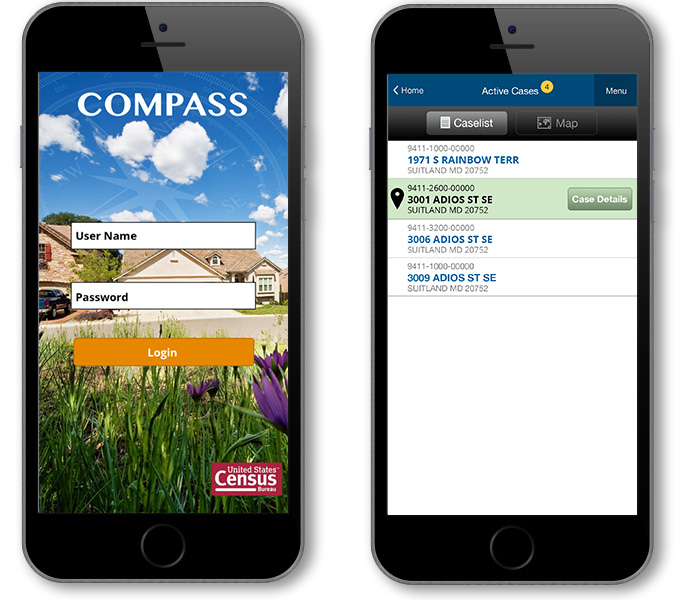
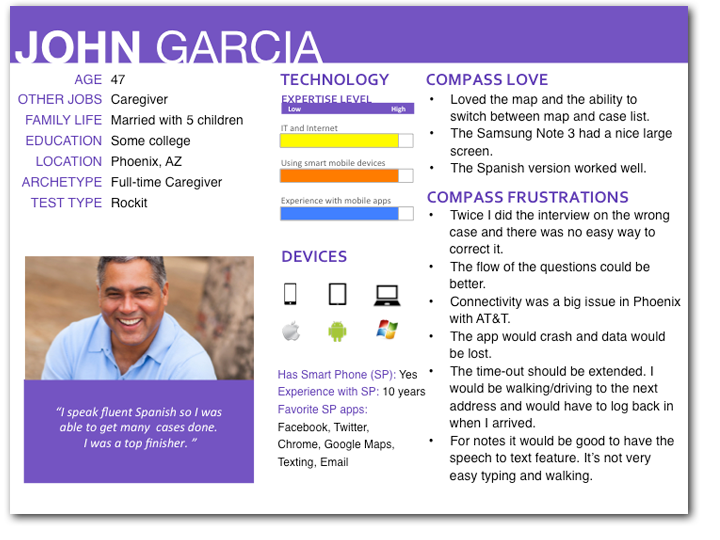
Franklin is a web-based knowledge management application used by United States Postal Service (USPS) call center agents nation-wide. The USPS call centers fields nearly 1 million calls a day.
The Franklin application was antiquated and in much need of updating. The system was slow and information within it hard for the agents find, making for long calls and frustrated customers.
We started by presenting the executive staff at postal headquarters user research methods and strategies that could reveal how to improve the current system. Upon gaining approval and the budget to conduct the research, we began by visiting the 4 call centers located throughout the US. We interviewed over 50 call center personnel as well as conducted observations of the agents as they fielded calls. The information for each center was evaluated and broken down by site into an executive summary presented to the postal executives.
Here are some of the insights found that surprised the executives:
This information was shared with USPS executes and the development teams. A 2-day design studio was conducted, and a new prototype created shortly afterward to address the many issues found during the research.
New prototypes were received exceedingly well by users and the new application design was approved for development.
Software Used:
 Axure RP
Axure RP Photoshop
Photoshop Illustrator
Illustrator Dreamweaver
Dreamweaver
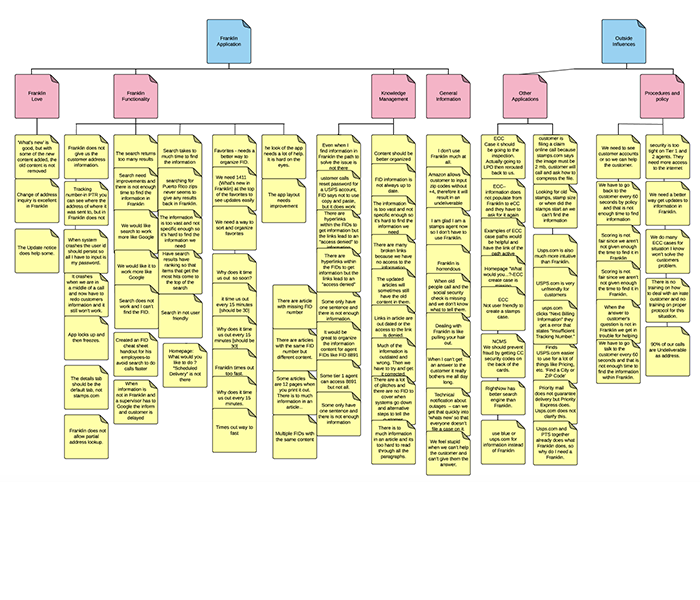
MCM (Mobile Case Management) is a mobile app used by full-time year-round field representatives at the US Census Bureau to interview individuals and businesses to verify the population within the US and Puerto Rico.
An antiquated Windows application and the cumbersome laptops the field representatives (FR) carried made their daily jobs more difficult.
Our solution was a mobile app that FRs can use on a lighter tablet. I led the research and design efforts by conducting user interviews and focus groups with field representatives and executive stakeholders from around the US.
Once the research was completed, it was documented via user flows, affinity charts, and journey maps. The insights learned from the research were used to create a new interface, and usability tests were conducted. After several rounds of updates and user tests of prototypes, the new application went into production within 18 months.
Software Used:
 Axure RP
Axure RP Photoshop
Photoshop Illustrator
Illustrator Dreamweaver
Dreamweaver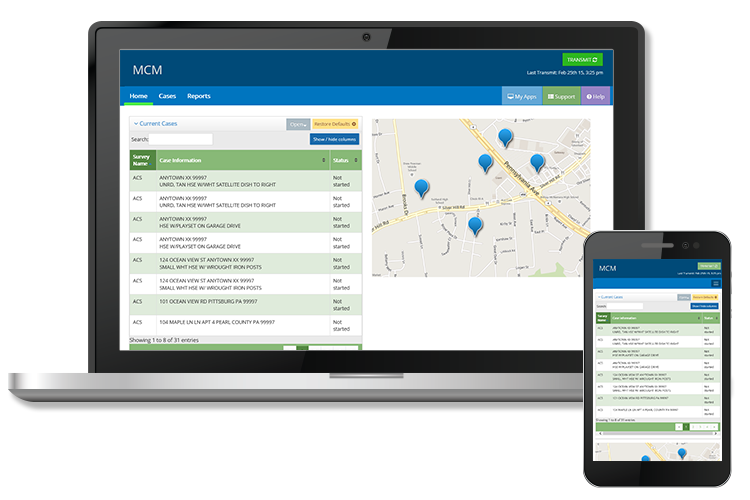

Exhibit-N was a prototype created for law enforcement as a crime case management system. The app has the following features:
This application was created for investigators to have a tool which contained all the information needed in the palm of their hands.
Software Used:
 Photoshop
Photoshop Illustrator
Illustrator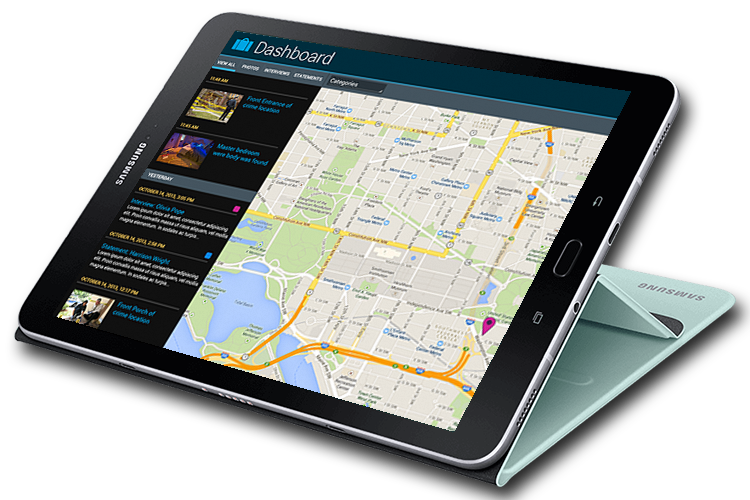
The United States Postal Service Mobile Highway Collection Scan is an Android application used by contracted truck drivers collecting mail in mostly rural areas. The truck drivers use the app to scan a bar code in the location they pick up the mail. This allows postal supervisors to track the mail pickup in a large region of the country.
My role on this project was to review the wireframes and to do the visual design compositions and style guides for the developers to follow.
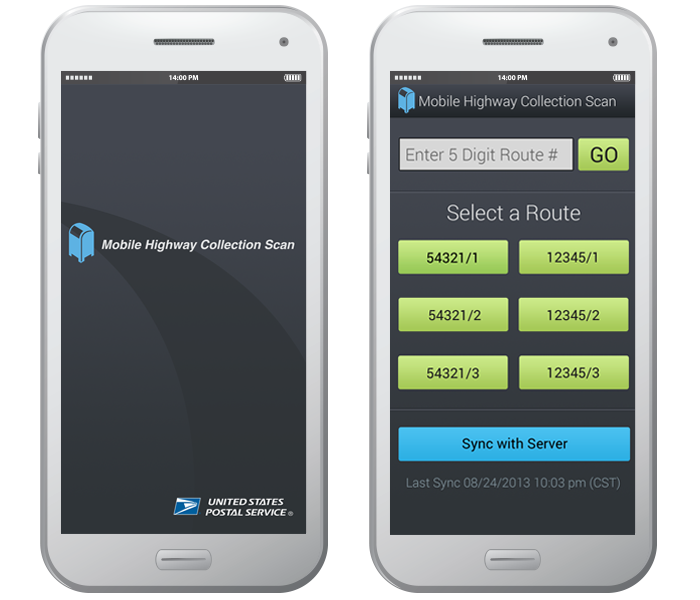
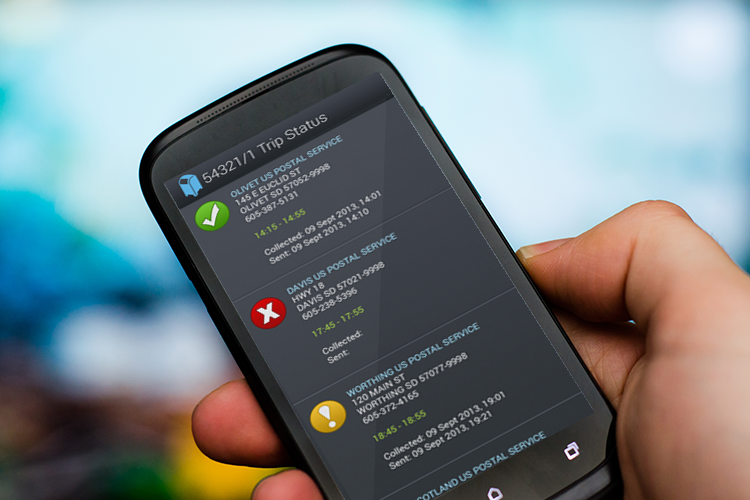
It was a wonderful experience to work as the lead web designer for the Office of the President of the United States. I was hired to redesign the website just before the presidential election of 2004. The site was to be redesign regardless of who won the election. During the second term for President George W. Bush, the website redesign was not quite realized; however, during the next 2 years the team made many improvements during my tenure.
Since the team was unable to fully redo the website entirely, myself and 3 other designers put our efforts into creating beautiful page level works of art. The designs created dealt with serious subjects like the war in Iraq and the G-8 Summits to more light-hearted pages done for Barney (the first family´s dog) and holidays. Flash at the time was popular and we used it to create the photo slide shows and games for kid-friendly pages.
In this role, it was an honor to serve the office, the American people and visitors around the world.
Software Used:
 Photoshop
Photoshop Illustrator
Illustrator Dreamweaver
Dreamweaver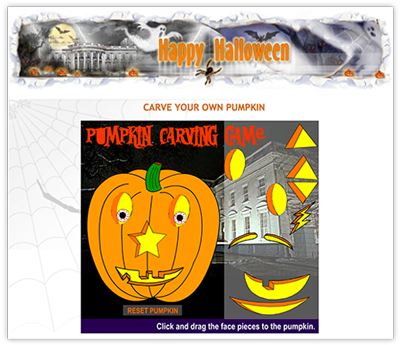

During the height of the war in Afghanistan (Operation Enduring Freedom) I was working at InfoReliance as lead Interactive Designer (2009-2011). At this time, I worked on mostly DOD applications finding myself assigned to several new projects to track the care of our wounded warriors. I was very passionate about these projects having grown up in the military as my father was a retired Army Sergeant who served in the Korean and Vietnam wars.
The applications tracked the care of the wounded warriors from the time they were injured, through their recovery process and either back to active duty or their transition into the Veterans care system. I designed 2 systems, one for the U.S. Army, the other for the U.S. Air Force. A third system was the interface which takes feeds from all serves and reports progress up to the Secretary of Defense.
There was virtually no budget for user experience, but I was able to interview some case workers doing the work for the individual wounded warriors. With that information, I was able to create wireframes and visual compositions which were shared with key stakeholders. When the systems were complete and put into production they were well received by the client and case workers for which the applications were built.
Software Used:
 Axure RP
Axure RP Photoshop
Photoshop Illustrator
Illustrator Dreamweaver
Dreamweaver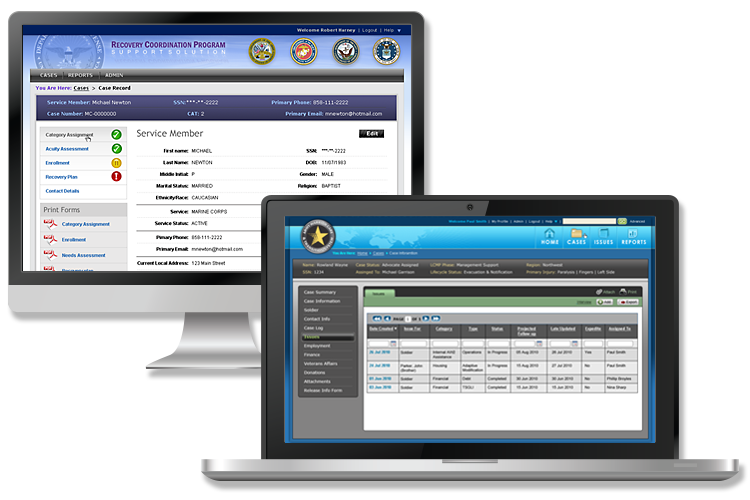


Strategic and visionary leader with a proven record of expertise in leading UX and development teams across non-profit organizations, consumer-driven entities, and government agencies. Successfully create positive user experiences for clients that align with an organization’s objectives. Dynamic leader with the ability to efficiently monitor the design and performance of products and services, improving UX, and resolving problems through the utilization of digital channels. Skilled in conducting research, testing, and collaborating cross-functionally to develop user-friendly and captivating interfaces. Consistently contribute to the field of UX design and deliver successful projects. Effectively manage multiple tasks and thrive in challenging environments with extensive knowledge of innovative technologies and tools.
Skills
